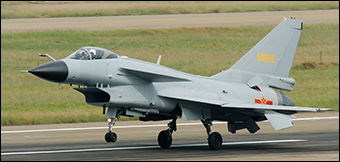RT
November 29, 2013
Chinese fighter jets were scrambled and followed US and Japanese planes that
had entered the newly-proclaimed Chinese air defense zone in the disputed area
of the East China Sea, Xinhua reports.
Two US surveillance aircraft and 10 Japanese F-15 jets were ‘tailed’ by
Chinese pilots on Friday.
China ordered an urgent dispatch of its Su-30 and J-10 fighter jets to an
area in the East China Sea after the foreign aircraft “invaded” the air defense
zone, they said.
The reported intrusions came in defiance of the East China Sea Air Defense
Identification Zone (ADIZ), established by Beijing last week.
China’s move has triggered outrage from several states in the region and
critical rhetoric from the US, as the vast zone covers disputed areas, including
the islets claimed by both China and Japan.
Earlier on Thursday, the Chinese Air Force conducted its first air patrol
flights over the zone, as Japan and South Korea sent their own military aircraft
into the zone’s airspace in an act of defiance.
China has stressed its decision to enforce the airspace identification zone –
which requires all aircraft flying over or near it to identify themselves –
follows common international practices and “is a necessary measure in China’s
exercise of self-defense rights.”
No international flights will be affected by the setup of the zone, Chinese
Air Force spokesman, Shen Jinke, told Xinhua.
Japan and its US ally blasted the decision as “unacceptable” and rejected the
“unilateral” declaration, saying it would create dangerous tension. However,
Chinese officials gave a reminder that both countries have long had their own
ADIZ, and that the Japanese never discussed theirs with their neighbor.
“If they want it revoked, then we would ask that Japan first revoke its own
air defense identification zone and China will reconsider it after 44 years,”
China’s Defense Ministry spokesman, Yang Yujun, said in a statement posted on
the ministry’s website on Thursday.
While possible action against the zone’s infiltrators has been vaguely
defined as “defensive emergency measures,” The Global Times, a Chinese state
media newspaper, on Friday called for “timely countermeasures without
hesitation,” should Tokyo violate the new ADIZ.
At the same time, the paper suggested China could ignore violations by some
other states, including the US. Two US military B-52 bombers flew over the area
on Monday without prior notice, with a Pentagon spokesman telling Reuters we
“have continued to follow our normal procedures.”
Friday, November 29, 2013
Subscribe to:
Post Comments (Atom)




No comments:
Post a Comment